Let's talk about you.
"*" indicates required fields
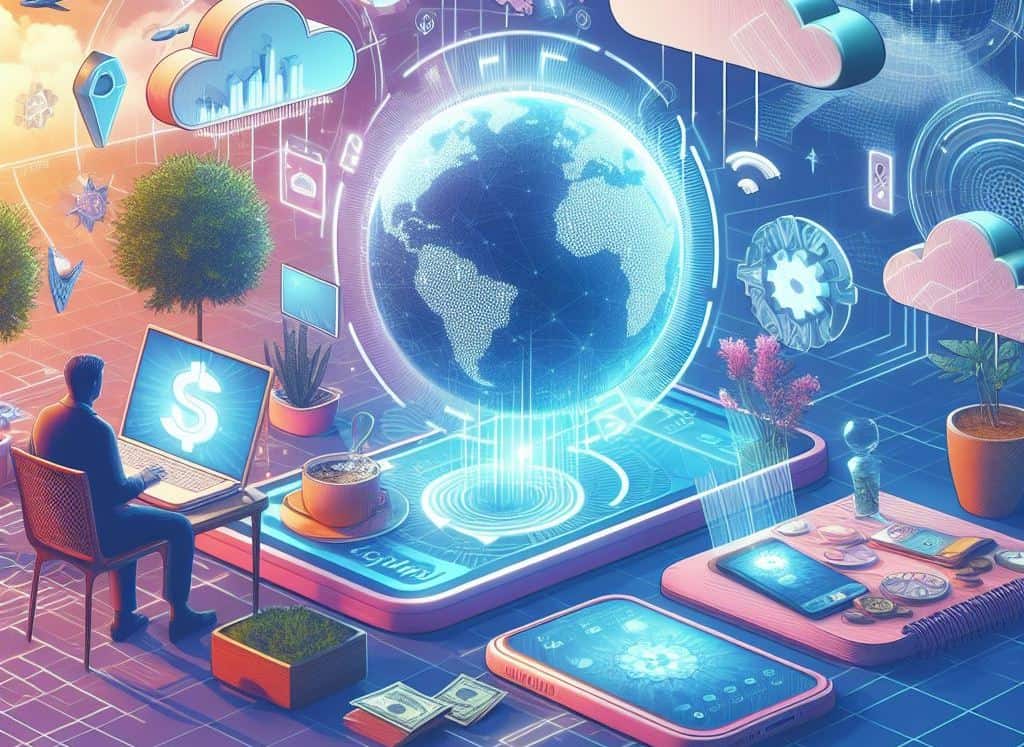
Every year, the biggest companies in the world publish prediction reports on what will happen to consumers in that year. The year 2024 is no different, and we have tons of research available to decipher what is going to happen. We are in what researchers call the post-pandemic economy, and our consumption habits are evolving. And they are developing into patterns that may seem contradictory to our intuition.
These reports are incredibly valuable for brand strategists and marketers, giving us insight into consumer behavior. These insights help branding experts, marketers, and business leaders understand the mindset of their target audience. To prep for this post, we read studies from Pinterest, Statista, Deloitte, Capgemini, McKinsey, Qualtrics, & GWI to understand the consumer outlook in 2024.
It is time to pull out the crystal ball and get a sneak peek into the future.
Sustainability has become a mainstream pop culture phenomenon thanks to Greenpeace warriors and climate activists like Greta Thunberg. Consumers are becoming more conscious about making consumption choices that are sustainable and environmentally friendly. Consumers demand more transparency from brands on how the products and services they consume are sourced and produced.
Around 60% of consumers want brands to play an active role in consumer education and awareness in this regard.
– Capgemini’s What Matters to Today’s Consumers 2024 Report
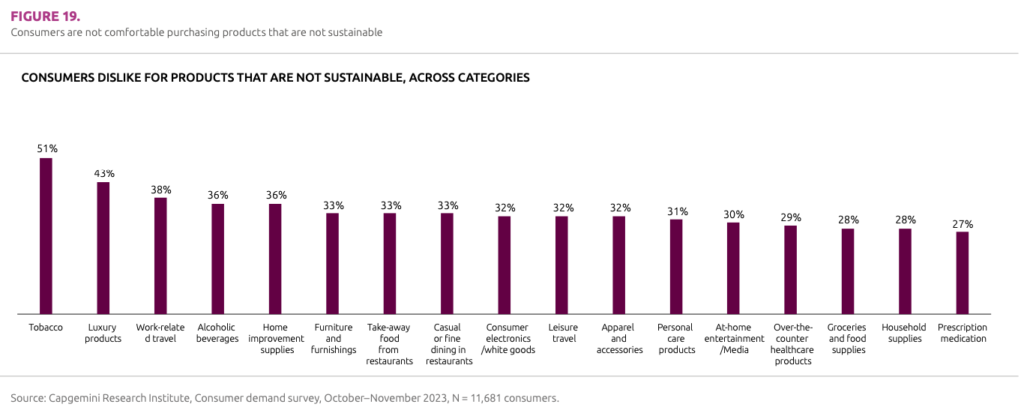
Source: Capgemini’s What Matters to Today’s Consumers 2024 Report
Several reports highlight the growing importance of brands leading with purpose and engaging in sustainable practices. This trend reflects a consumer shift towards supporting brands that align with their values, particularly regarding environmental and social responsibility.
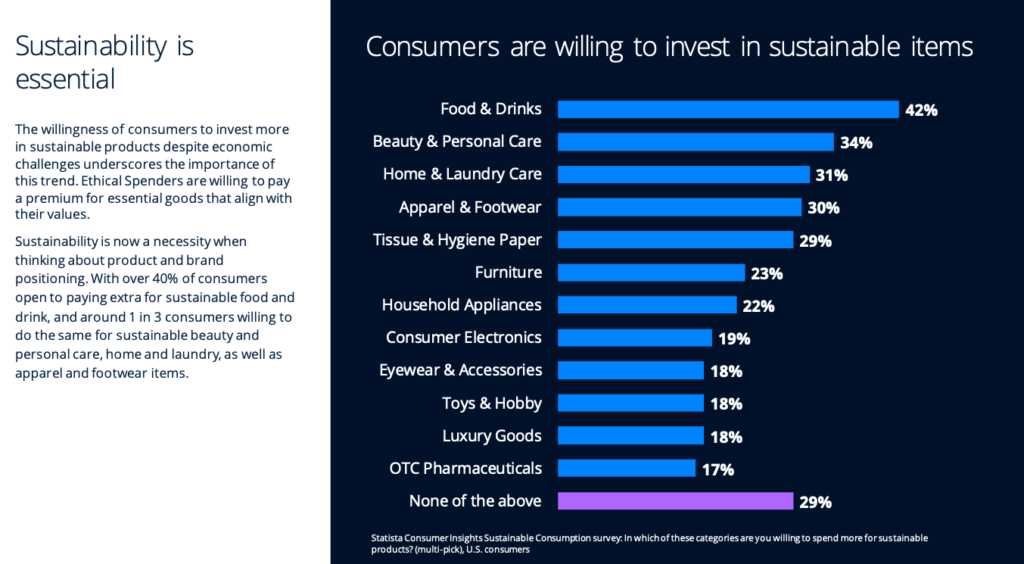
Source: Must-watch consumer trends for 2024 Whitepaper, Statista
Note for Marketers/Brand Managers/Small Business Owners:
This insight is helpful to understand what people value when they make purchase decisions. Sustainability and environmental impact are top of mind for most people in 2024. This means that no matter your industry, you should create a brand that promotes sustainable practices.
One of the most significant changes after the pandemic happened in the thrifting economy. Thrifting moved from a hobby to a mainstream consumer spending pattern. It is the reason why thrift stores are becoming expensive.
More and more people choose to buy second-hand goods and participate in a “freecycle” economy where people donate and accept free products within communities. This trend is easy to spot on local Facebook groups and the Facebook marketplace, where millions of goods are exchanged daily. We are seeing an emergence of the second-hand economy, and terms like re-commerce, resale, circular economy and circularity are gaining global traction.
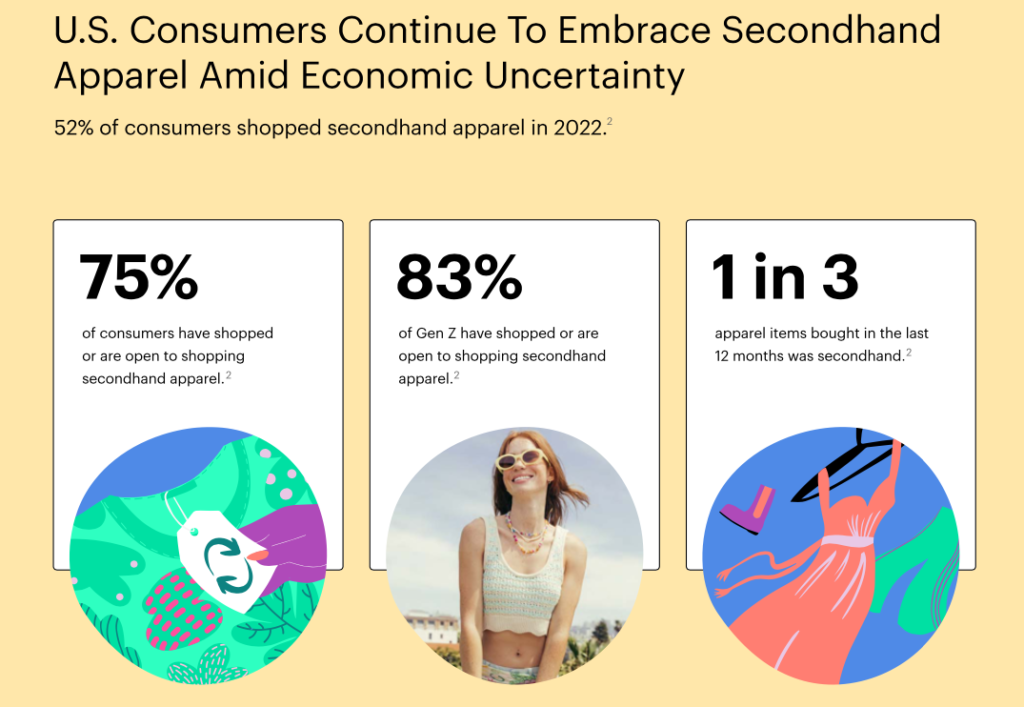
Source: Thred Up Resale Report 2023
Resale is gaining momentum globally as major retailers embrace increasingly circular business models. Although the appeal of value remains a primary factor prompting consumers to prioritize secondhand options, growing awareness of global climate issues has heightened recognition of resale’s capacity to mitigate fashion’s environmental impact. The global secondhand market will reach $350 billion by 2027.
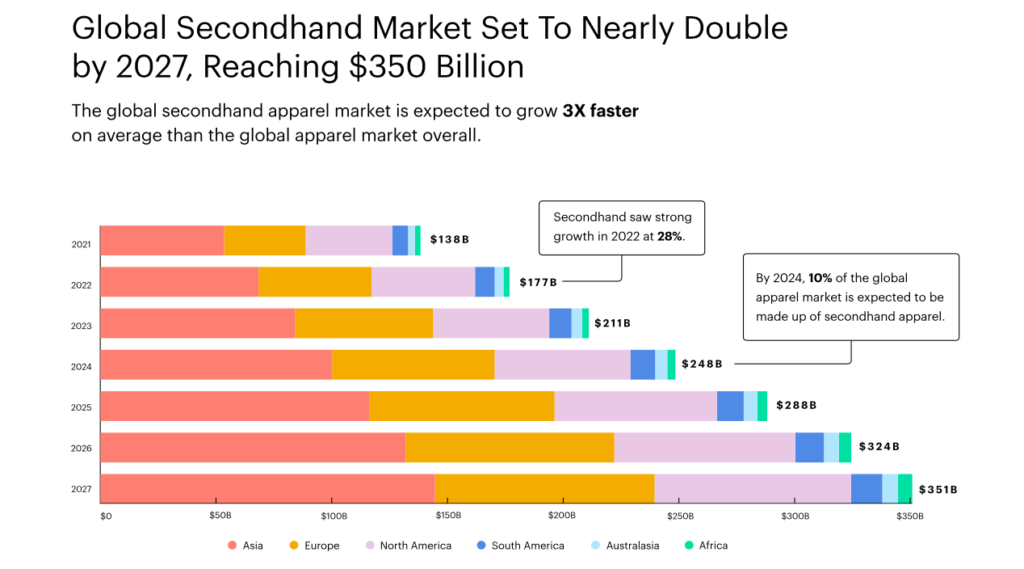
Source: Thred Up Resale Report 2023
Note for Marketers/Brand Managers/Small Business Owners:
This insight is helpful to understand that shoppers are increasingly leaning towards better value and conscious choices. Today’s consumers aren’t afraid to make bold choices as long as they align with their values and do not harm the environment. For a business owner, providing more value for every dollar your customers spend on your product/service is critical in 2024.
The demand for premium products remains stable despite economic uncertainties affecting purchasing ability. Consumers are buying premium and long-lasting products instead of those with short lifespans and lower quality. Consumers are leaning towards durable products that extend the lifespan of other products.
In multiple FMCG categories, consumers choose premium products that are better quality and have longer shelf life. This change aligns with a decrease in consumers emphasizing low prices as their primary purchasing factor, except when buying bags and accessories.
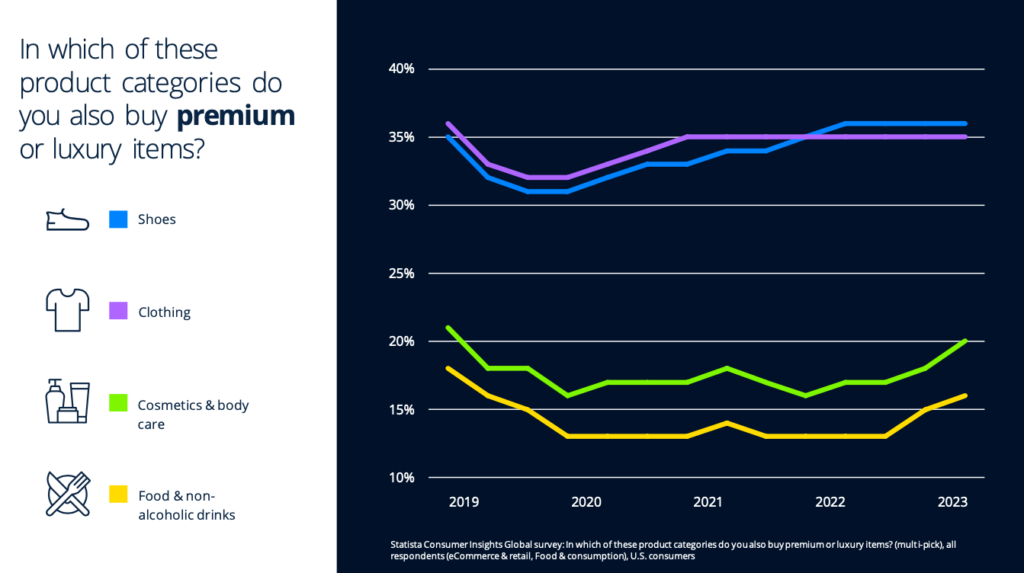
Source: Must-watch consumer trends for 2024 Whitepaper, Statista
Note for Marketers/Brand Managers/Small Business Owners:
This insight sounds counterintuitive, especially in an uncertain economy where people are willing to spend more for premium products. It is an incredible insight to know that if your product is premium, you can demand higher prices, and customers will come. For business owners, it is a validation that as long as your product/service is premium and marketed accordingly, your customers will line up to purchase.
In the continually shifting and evolving consumer behavior, there are emerging patterns in consumer preferences when it comes to personalization and authenticity. When it comes to personalization, before the pandemic, consumers were irritated with targeted digital advertisements. This annoyance with digital ads has decreased substantially in recent years.
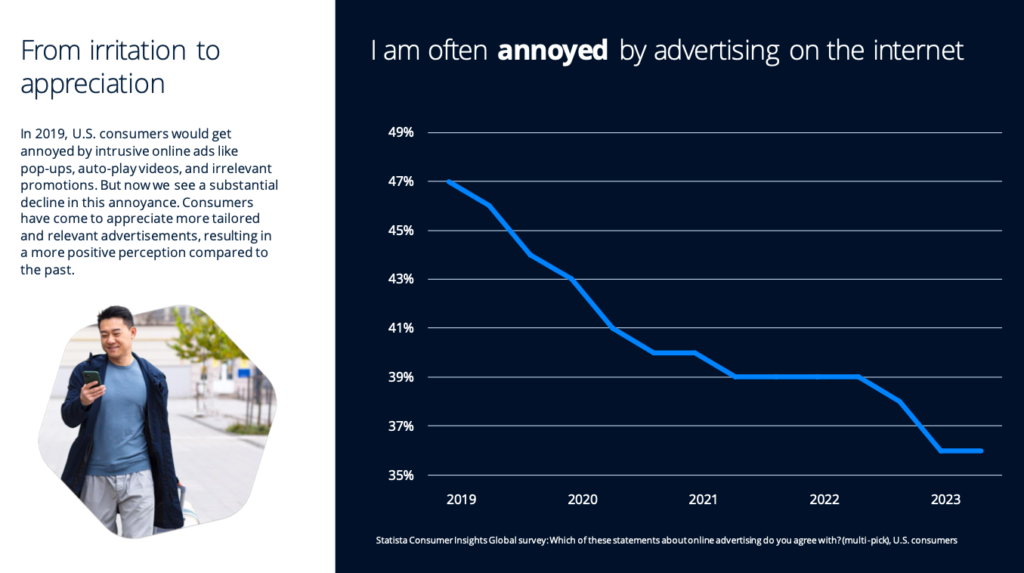
Source: Must-watch consumer trends for 2024 Whitepaper, Statista
Consumers are craving authentic, unfiltered content that captures genuine experiences. The onus is on brands to create content and marketing approaches that connect on a personal level, using technology to grasp and meet individual preferences. Privacy concerns are less significant than in 2019, and consumers are happy to share their data to receive tailored content and personalized experiences.
Note for Marketers/Brand Managers/Small Business Owners:
This insight is helpful to brand managers and business leaders to put more effort into creating personalized experiences and content for their target audience. This data point also sheds light on the shifting consumer preferences on data privacy and how, with the right incentives, businesses can capture their attention (& data).
Consumer behavior is ever-evolving and will continue to evolve. Consumers aren’t walking in a straight line from a problem (need) to a solution (product/service). Broad stroke consumer trends like we covered in this post help gauge where the wind is blowing. They do not tell stories specific to a particular niche or industry but are very helpful in understanding the motivations that drive an average consumer.
Want to understand consumer behavior in your industry/niche? Just fill out the contact form, and let us show you how it’s done.